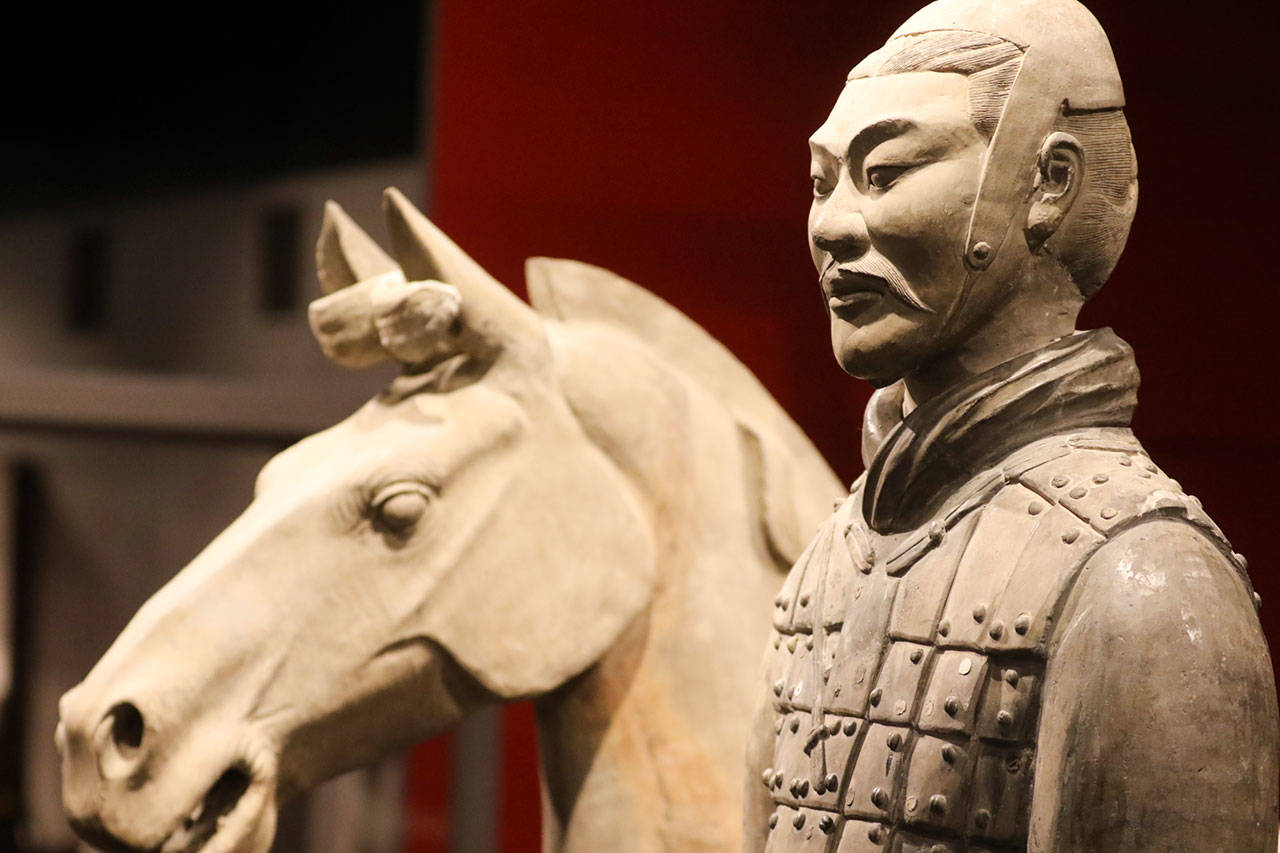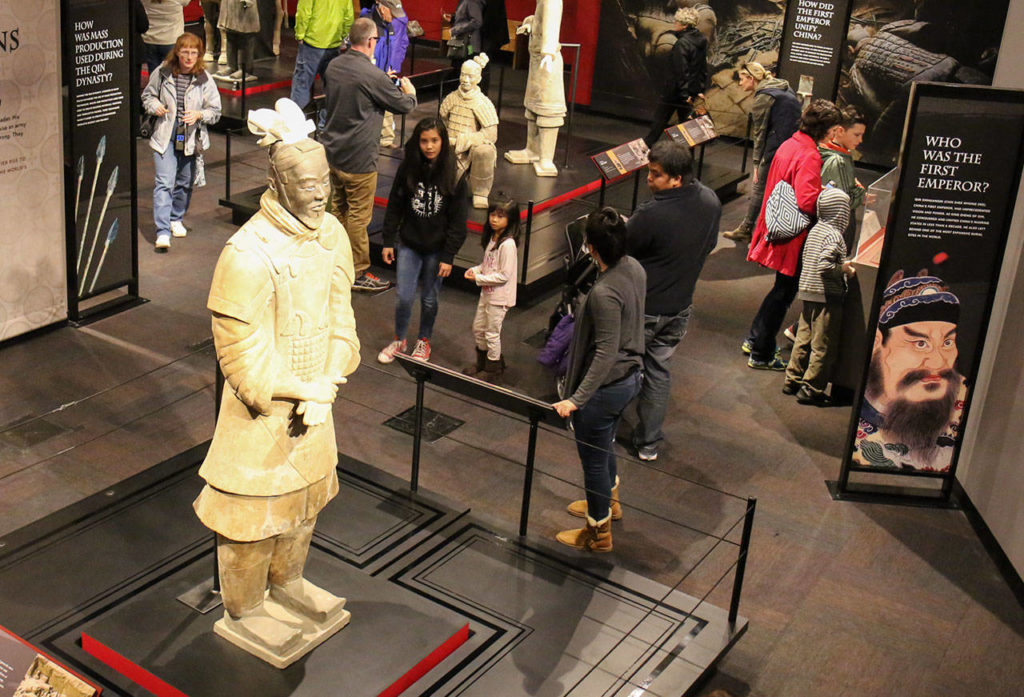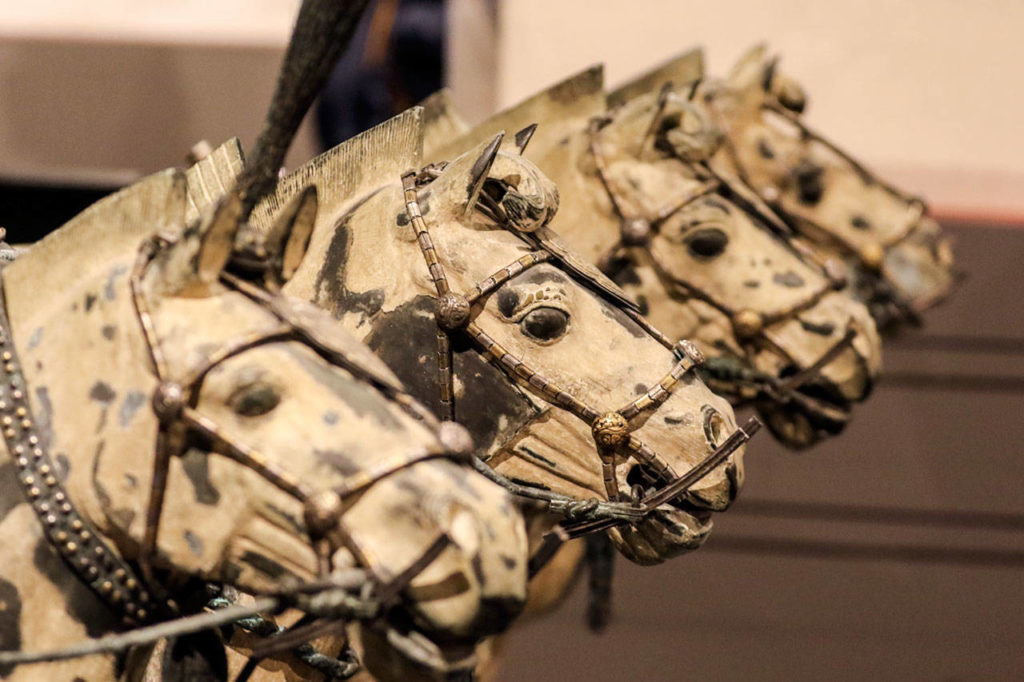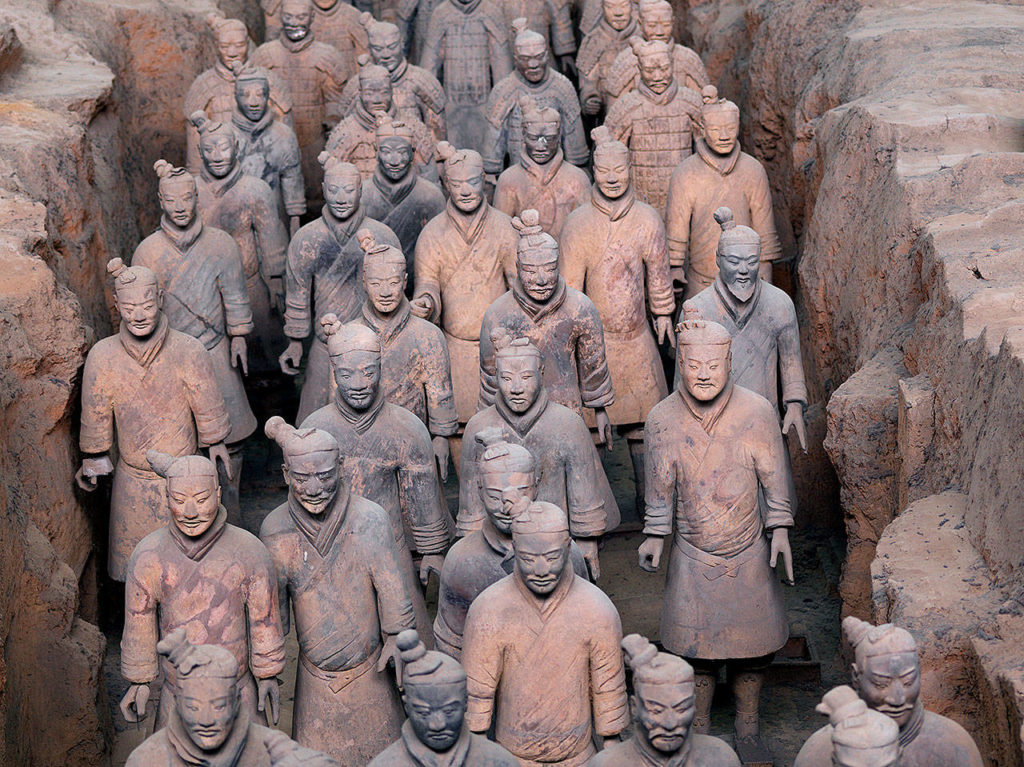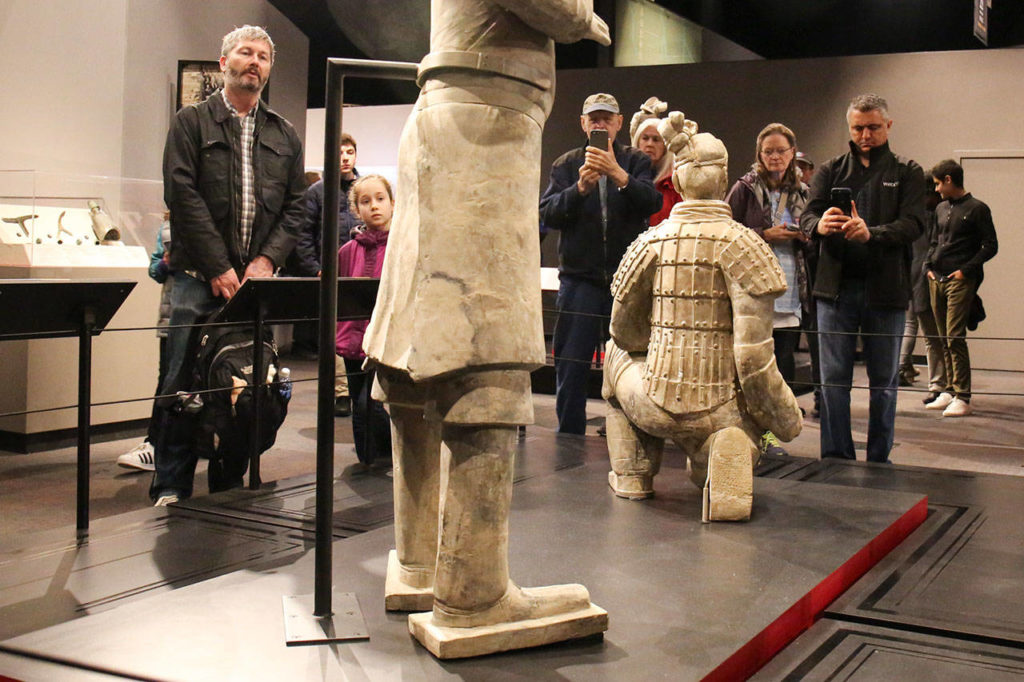China’s first emperor was obsessed with living and ruling forever.
More than 2,200 years ago, Qin Shihuangdi (also Qin Shi Huang) ordered that a massive army of clay soldiers be crafted to protect him in the afterlife.
Some of these remarkable Terracotta Warriors are now on exhibition at the Pacific Science Center in Seattle.
While the Terracotta Army has been staged in the United States before, the Pacific Science Center and the Franklin Institute of Philadelphia partnered to build a one-of-a-kind exhibit that focuses on the science and technology surrounding the ancient finds.
The Terracotta Warriors of the First Emperor exhibit includes more than 100 historical and cultural artifacts all on loan from the Chinese government, which are only for display in Seattle and Philadelphia.
It was crazy to think that I was about to spend an afternoon looking at the Terracotta Warriors, one of the greatest archaeological discoveries of our time. I had to keep reminding myself that I was really there; that these warriors are really here.
The highlights, of course, are 10 life-sized clay figures unearthed from the first emperor’s mausoleum, including a general, an armored officer and soldier, archers, a cavalryman, a saddled horse, a charioteer, an official and a musician.
When I saw my first clay soldier — a brave-looking commanding officer — I was stupefied. (At over 6 feet tall and standing on a display, the officer towered above me. I’m 5 feet 1 inch tall.)
After Shihuangdi conquered all known enemies, formed the empire of China and advanced its civilization, he turned his attention to immortality.
The first emperor commanded an estimated 8,000 life-sized terracotta figures to serve and protect him as his guards for eternity in a 22-square-mile burial compound that reflected his earthly kingdom. It took more than 700,000 workers nearly 40 years to construct the mausoleum.
Researchers estimate that at least 1,000 of the workers were tasked just with creating the terracotta figures. They spent almost 15 years manufacturing, assembling and designing them.
While the warriors’ torsos were built with coils of clay, their heads, arms, hands, legs and feet were made with molds. The figures’ intricate clothing, faces and hair, however, were sculpted by hand. Thousands and thousands of soldiers were made, yet no two were alike.
Assembled figures were fired in large kilns. Then a coat of lacquer was applied as a base for painting. Although most of the paint is long gone, the statues were painted with bright, bold colors, scientists determined.
Other artifacts from the first imperial Chinese dynasty from the collections of 16 museums in the Shaanxi Province accompany the figures to provide context to Shihuangdi’s legacy. These include weapons, coins, jade pieces, bronze bells, gold ornaments, architectural pieces and ceremonial vessels.
The most interesting of these were displays that showed the weapons and military tactics that led to his conquering all Chinese rivals; and how the emperor standardized currency, weights, measures and writing, to unify China.
Interactive elements stationed throughout the exhibit (in true Pacific Science Center fashion) allow visitors to learn more about the artifacts with touchscreens and hands-on activities.
I had fun assembling replica warriors as if I were an ancient Chinese worker at one station, and then trying to reassemble fake broken pottery as if I were an archeologist recovering them 2,200 years later at another. It was also interesting to watch time-lapse videos that illustrated how time has changed the figures.
Shihuangdi’s burial of an army of life-sized terracotta figures was unprecedented. But he was following ancient Chinese tradition where rulers were given elaborate burials.
A display of artifacts from before and after the Qin dynasty showed how these practices evolved over time.
Before the Qin dynasty, burials included tiny, simple clay figures to accompany the deceased into the afterlife. They were small enough to fit in my hand. After the dynasty fell these statues were bigger and more detailed than earlier figures, but still relatively small. They were about the size of a child’s baby doll.
The Terracotta Army was discovered in 1974. Farmers were digging a well near Xi’an, China, when they found some pottery fragments. As they kept digging, they uncovered more and more pieces of life-sized figures.
Even after more than 40 years of excavation of the emperor’s burial complex, archaeologists have yet to uncover all of Shihuangdi’s underground kingdom. His tomb remains untouched.
Shihuangdi died a mortal man in 210 BCE. But perhaps it was his order to bury a Terracotta Army that gave him the immorality he so longed for. Thousands of years later, the world knows his name and marvels at his accomplishments.
Terracotta Warriors by the numbers
600: Pits uncovered in the burial complex
8,000: Statues discovered in the pits
2,000: Figures excavated to date
2,200: Years buried underground
40: Years of excavation and discovery; and years to construct the mausoleum
2.4: Million pounds of clay used to make the figures
300: Pounds, average weight of figures
40,000: Weapons made of bronze
22: Burial site square miles
700,000: Workers who constructed the site
If you go
Terracotta Warriors of the First Emperor will be on exhibit through Sept. 4 at the Pacific Science Center, 200 Second Ave. N., Seattle.
See the exhibition 10 a.m. to 5 p.m. Mondays through Fridays, 10 a.m. to 6 p.m. Saturdays and Sundays. Tickets range from $26.75-$34.75. Prices include general Pacific Science Center exhibit admission. Group discounts are available.
The Pacific Science Center is also showing the IMAX documentary “Mysteries of China,” which is meant to complement the Terracotta Warriors exhibition.
For more information, go to www.pacificsciencecenter.org or call 206-443-2001.
Talk to us
> Give us your news tips.
> Send us a letter to the editor.
> More Herald contact information.
